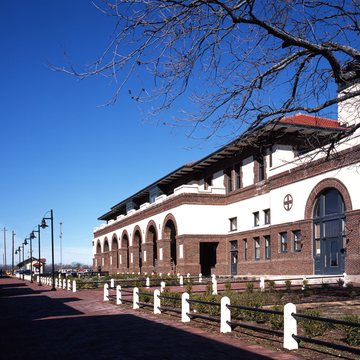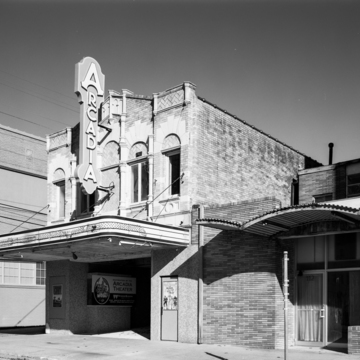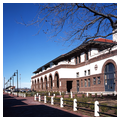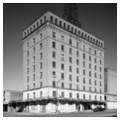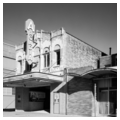The linear commercial district stretches across several city blocks. It incorporates some of the city's best early-twentieth-century architecture, though some of the buildings are heavily modified. The Temple City Hall (1928, Milton W. Scott) at 2 N. Main Street and the ten-story First National Bank Building (1953, Wyatt C. Hedrick) at 83 S. Main Street are two of the finest buildings representing different phases of architectural development. At S. 4th Street and E. Central Avenue, the Doering Hotel (1928, Anton Korn), also known as the Hawn Hotel, is a nine-story, three-part scheme with a limestone base, buff brick body, and an arcaded top story above a corbeled cornice of small Lombard arches. At 116 E. Central Avenue, the Arcadia Theater (1928, W. B Palmer) was built for live performances and silent movies by the architect of the Dent Theater chain. The Santa Fe Depot (1911, Jarvis Hunt) at 315 W. Avenue B has only a shadow of the Mission Revival style favored for other Texas depots of the time. The low hipped roof and horizontal emphasis also hint at a Prairie School influence.
You are here
Temple Commercial District
If SAH Archipedia has been useful to you, please consider supporting it.
SAH Archipedia tells the story of the United States through its buildings, landscapes, and cities. This freely available resource empowers the public with authoritative knowledge that deepens their understanding and appreciation of the built environment. But the Society of Architectural Historians, which created SAH Archipedia with University of Virginia Press, needs your support to maintain the high-caliber research, writing, photography, cartography, editing, design, and programming that make SAH Archipedia a trusted online resource available to all who value the history of place, heritage tourism, and learning.





















